
 Interview
Interview


![]() Part 1: An emotional conflict that led to new perceptions
Part 1: An emotional conflict that led to new perceptions
![]() Part 2: A desire to convince audiences both at home and abroad of the allure of Noh
Part 2: A desire to convince audiences both at home and abroad of the allure of Noh
Interviewer: Kinue Oshima (Noh actor of the Kita school)
Photos: Ohi Shigeyoshi
Part 2: A desire to convince audiences both at home and abroad of the allure of Noh
Ultimately, the utai should convey the uniqueness and pathos of human life through its words and tone
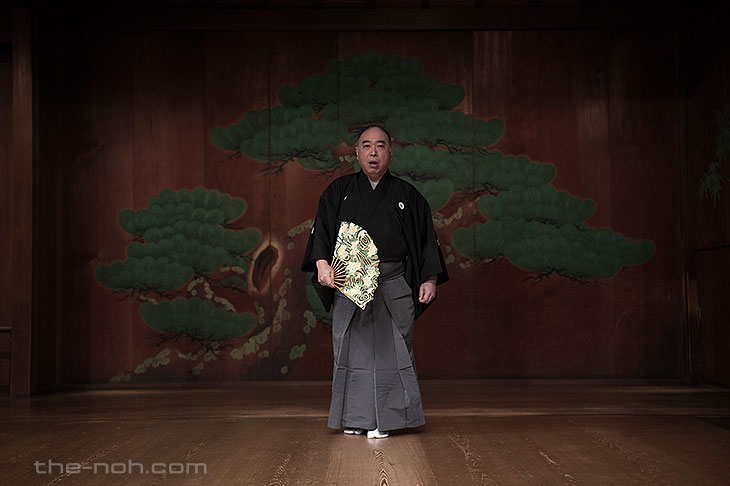
Oshima: Whilst this naturally holds true for the kata (the stylistic movement patterns that form the gestural vocabulary of Noh), too, as I see it, the more you train the more difficult the utai (the chanted or spoken music of Noh) become. Even when chanting softly, you cannot perform the utai effectively without proper strength in your diaphragm. I suspect that for a beginner, even the concept of “drawing breath” may be difficult to grasp.
Kanze: It’s akin to lowering your voice when you have something unpleasant to transmit. That, essentially, is what you mean by drawing breath, isn’t it? You wouldn’t raise your voice and: “That’s just between ourselves, by the way”, would you (laughs)? That’s forceful (pushy) breath.
This is fiction, so actors need to approach the sensitivity and mindset of the blind when they perform. One theory of the utai holds that it’s a matter of “exhaling and inhaling breath” (Kanze chants a section of Yoroboshi to demonstrate a forceful breath and a restrained breath. With the forceful breath comes a bright, refreshing exhalation of power, the restrained breath seems to draw that power into the body to produce the gentle aesthetic of the utai.) That is where the expressions ‘restrained’ and ‘forceful’ come from. The Hōshō school has made the technique of restrained breath their specialty. It’s the product of accumulated training in that technique, and by all accounts both my father and my uncle found the Hōshō school most instructive when practicing vocalization.
Oshima: I’ve heard that said, too.
Kanze: I’m thinking about great masters such as Kenzō Kondō, Susumu Takahashi, and Kanesuke Noguchi. Personally, I like actors who are generous with their breathing when they chant. I have only ever heard a tape recording of his performance, but I am a great admirer of the breathy chanting of Kyūsen Sakurama.
In the issei (or “one voice”, a short vocal sung directly after the entrance of the shite) in Yorobōshi, which I mentioned just now, when I hear the utai-no-kiri (the final vocals) as performed by Kyūsen in Matsukaze (see the Noh plays database), it seems to expand gradually and I am struck deeply by its beauty.
There is an infinite variety in the richness held by the voice and breath, which is what makes the utai so fascinating. If you give oneself up to that, though, you run the risk of becoming insular. The modern age is broad but shallow and I think it will produce major changes in the modality of the utai.
Be that as it may, ultimately, the utai is not about revealing the meaning of the words, but about conjuring images of the uniqueness and of human life, the poignancy of human feelings, and conveying those images through its words and tone. In consequence, I think it’s important to consider the makings of the utai, too.
Oshima: Utai don’t simply vary from school to school, the range is truly enormous and, as you mentioned, given the impossibility of chanting properly unless your body is in good shape, any attempt to vocalize using half-baked techniques can only make matters worse.
Kanze: That’s because any sound you produce disappears in the instant it’s made. Moreover, the actor must reproduce the images and emotions of the piece with his voice; that is vital. For example, your body differs from that of your teacher, but an actor must draw on a range of experience: the physical strength he possesses, the quality of his voice, the way in which he studies, and so forth, when attempting to reproduce the lessons instilled in him by his teacher. And if he fails, then he must find a way to grasp the image and transmit it (to the audience). That is why Noh can be seen as “the art of reproduction”.
As far as is humanly possible, I want to communicate the things I have learned to my son and my apprentices, but the quality and character of their voices is completely different to my own. What’s more, as a Noh actor you must train to be an all-rounder if you are to succeed. That’s why actors like me must be capable of going beyond gender so as to perform the role of a frail woman (laughs).
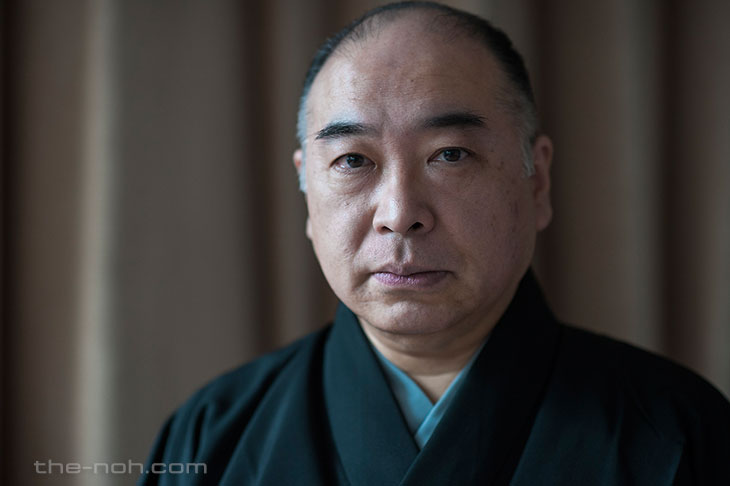
Looking ahead to the Olympics in 2020
Oshima: Japan will host the Olympics in 2020, and the Nohgaku Performers’ Association is making various preparations for this event too, is it not? As president of that Association, I’d like to ask you a question. The Olympic Charter recommends that the host country include in their activities the promotion of culture and the arts in addition to sports, and I am curious about the aspirations of the Nohgaku Performers’ Association with regard to the Olympics.
Kanze: As you say, there is a cultural aspect to the Olympics. Much was made of the cultural events and activities that took place during the London Olympics, for example, which were held across the country both in the build up to the event and following its conclusion. Those in Noh circles view the 2020 Olympics as an opportunity to emphasize the role that Noh plays in Japanese culture and all its considerable achievements to date.
The Nohgaku Performers’ Association is a private organization, but we’ve been vociferously proclaiming our desire to participate in the Olympics, and that is bound to have caught wider attention, I think.
The reality for the Noh world is that the number of people who truly love and support this art form is dwindling. It’s true that those who learn about Noh through “the Noh.com” are coming to see performances, mind you. We’ve tried a whole range of activities, including Noh for students and Noh for office workers, but more often than not, before we can even get off the ground, we’re met with: “I don’t understand Noh. It’s boring.” If you probe a little deeper, though, the students, not the adults, will tell you: “I didn’t understand what was going on, but it’s a completely different world and that’s interesting.”
Oshima: I’ve had similar experiences.
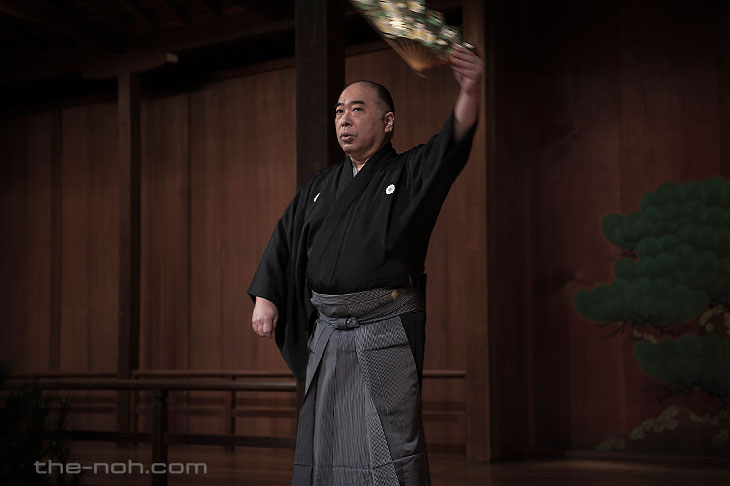
Kanze: Japan’s teachers are all very earnest and tend to hold their students at arms length because they want them to appreciate the difficulty involved in teaching things that are so difficult to put a value to. All abstract art is “incomprehensible”, however. There are other ways of looking at it, though, even if you hold this interpretation to be true. If you put it in terms of whether a spectator can or cannot understand what he or she is seeing, it’s surely enough if they “understood”. The arts are interesting precisely because there are elements that elude understanding; there’s nothing interesting about easy answers.
People are developing a habit of becoming frustrated if the answer they search for isn’t readily available, but Noh and Kyogen, which seek to tell modern audiences of the absurdity of human existence, are gone in an instant. The talent involved in transmitting things that vanish in an instant is a product of the qualities of perseverance and magnanimity to accept diversity that are inherent to the Japanese. And that is something that needs to be passed on to the next generation. Noh and Kyogen are symbols of that culture. As I see it, Japanese people need to appreciate their own culture before reaching out to embrace foreign culture; that is how cultural communication should progress. The Nohgaku Performers’ Association sees the Olympics, an event that draws a huge amount of public attention, as an opportunity to take positive action in promoting Noh and bringing it into the spotlight. That is likely to be a difficult undertaking in the current climate, mind you.
Oshima: Do you genuinely feel that way?
Kanze: I do, yes. Until recently, the Japanese viewed culture as a familiar, as something they could come into contact with simply by reaching out a little way. That is a good notion in and of itself, but the tempo of life has quickened and we’re in an age of globalization where the originality of Japanese culture is rapidly being lost and that contact is becoming more difficult to achieve.
This is something that we are discussing and acting on at the Nohgaku Performers’ Association: how to make our cultural leaders aware of the problem and appeal to the general public at the same time, but it’s very difficult in today’s climate.
At the very least, we need to conceive of a way of enlivening the event with something on the scale of the Noh festival that was held to commemorate the last Tokyo Olympics in 1964 (when special Noh performances featuring performers from various noh schools were held for ten consecutive days), a way that avoids imposing a burden on the various Noh theatres involved. The Nohgaku Performers’ Association is also looking at the system of performances in hopes of finding ways to bring them to a wider audience, and it’s something that comes up frequently in conversation at Tessenkai, too. A series of performances given over the course of several days is undoubtedly something that will come under consideration in the future as well.
Oshima: It would be good if these efforts to promote Noh to foreign visitors to the Olympics served to heighten domestic awareness of the world of Noh, too.
Kanze: As I said a moment ago, the Japanese perceive their national culture as being something that is within easy reach, but the idea that it is something that can be readily repossessed is in fact misguided. If arts like Noh and Kyogen that are passed down from generation to generation are allowed to cease, even once, they will die out completely. That’s why our goal is to simply bring people into contact with these arts and, beyond that, to bring them to the understanding that culture is something that needs to be participated in and intersected with if it is to remain in existence.
Something that is important for me is to ensure that overseas performances are seen by Japanese people living locally. As I see it, it’s a wonderful way to encounter Noh.
Oshima: Do you mean Japanese people living overseas?
Kanze: Yes. Japanese people living locally inhabit a different culture, which means that they’re not only thinking about the wrongs and rights of Japanese ways of thinking and the Japanese way of life, they’re likely to be wondering constantly about what exactly constitutes Japanese culture. Seeing a Noh or Kyogen play against that backdrop of thinking is a way of making Japanese expatriates conscious of the world portrayed therein as a legitimate way of being. In fact, there are many people who encounter Noh and Kyogen for the first time whilst overseas. As I see it, we should be doing our utmost to encourage Japanese people who’ve been sent overseas on business, expatriates, embassy employees and other Japanese people living abroad to come to the overseas performances we give. It goes without saying that we want non-Japanese to attend these performances too, but bringing them in front of a Japanese audience is a major goal in Noh circles.
Oshima: It’s true that a considerable number of Japanese people I’ve met when giving Noh performances overseas are seeing a Noh performance for the first time. Perhaps that’s because their feelings towards Japanese culture – something they may have been quite unconscious of whilst in Japan – rise to the surface precisely because they are residing abroad.
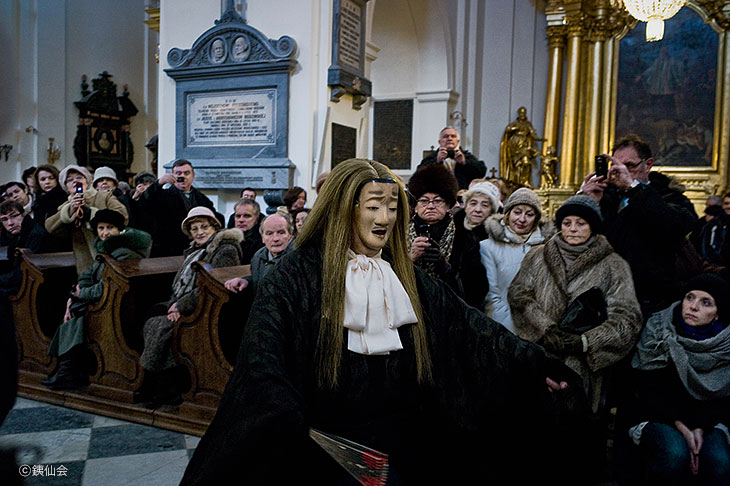
A scene from “Chopin and The Piano Tuner”, a new Noh play that was written by Jadwiga Maria Rodowicz and performed in the nave of the Holly Cross Church in Warsaw, Poland. The dance is set to one of Chopin’s Nocturnes that was published posthumously, and is an ode to the feelings of longing experienced by the composer, who died whilst staying in Paris. Chopin’s heart is immured in the Church of the Holy Cross where the play was staged, and the fusion of Noh and the piano created an exquisite requiem to the late composer.
Noh is a primitive tool of communication
Oshima: We have been speaking about passing knowledge on to future generations, and I’d like to ask you about what you, as a leading light in Noh circles, are doing to cultivate younger Noh actors.
Kanze: With the aging of Japanese society, the dwindling pool of successors is becoming increasingly apparent. It takes many years to reach the point where you can stand alone as an actor, and these winds are not necessarily favorable to the world of Noh and Kyogen. It is no easy task for young actors to make a living. Even those who manage to continue with the rigorous program of training whilst surviving on a small income, face the reality of fifteen or twenty years of serious training in order to be considered a pro. There are actors who have been training since childhood who are already in their 30s before they reach the point where they are capable of standing alone, but those who come to Noh as adults will only manage to acquire a very studied approximation of the techniques even after a decade of training. On top of that, you have to consider your income during that time, and marriage, and if you add on to that the necessity of training an apprentice; it’s a tall order by any stretch of the imagination. That’s one of the reasons why the number of successors is decreasing. At the same time, people with a real passion for the art are emerging, though we can offer no guarantees, whilst they are in training, that they will find work as Noh actors in the future. That’s why there are so few live-in apprentices among Noh families now.
Oshima: It’s a difficult time to secure live-in apprentices, is it not? The knowledge that you must continue accumulating training with absolutely no assurance that you’ll be able to make a living at the end of it inevitably leads to the conclusion that it’s not worth the effort. Even so, given the sense that there is a need to bring up new actors, are there things that you want to pass on to junior actors and other young people?
Kanze: Let’s see. Noh is a difficult, demanding profession, but it is also one means of using your voice and your body to express yourself.
Various forms of theatre exist, but it is only in the worlds of Noh and Kyogen that primitive communication takes place. A Noh play unfolds according to scripted words and forms, but it also reveals the deeply individual qualities of its actors.
In ancient times, feudal lords who were unable to give voice to their honest opinions due to their position in society, turned to Noh and Kyogen performances where, through an exchange of just a few hours, they could convey things like: “That Matsudaira Sanukinokami is a bit naïve, isn’t he?” It was very popular.
Oshima: Really? I had no idea.
Kanze: Even someone who is not particularly loquacious becomes eloquent on a Noh stage and you get a taste of their unique qualities as an individual.
Words are important, but written or spoken, there is no absolute guarantee of their verisimilitude. They are just one tool of communication and it is hard to speak intimately with someone you’re not on especially familiar terms with. But if you use a cultural element, such as haiku or renga (linked verse) or a work of art as a point of transfer, it can help to facilitate communication.
Today, communication has become easier as the result of social networking sites and various other tools, but “raw” communication is infinitely preferable to communicating in cyberspace. Noh serves as a kind of stopping point, though mastering it might take a little longer than a smartphone (laughs).
Oshima: The fascination that comes from witnessing the stylized movement patterns of the tea ceremony and Noh bring the qualities of an individual into sharp relief is specific to Japanese culture, I think. Seeing Noh as a stage that lends itself to bringing out the uniqueness in its actors would be an interesting way to come to a performance, too.
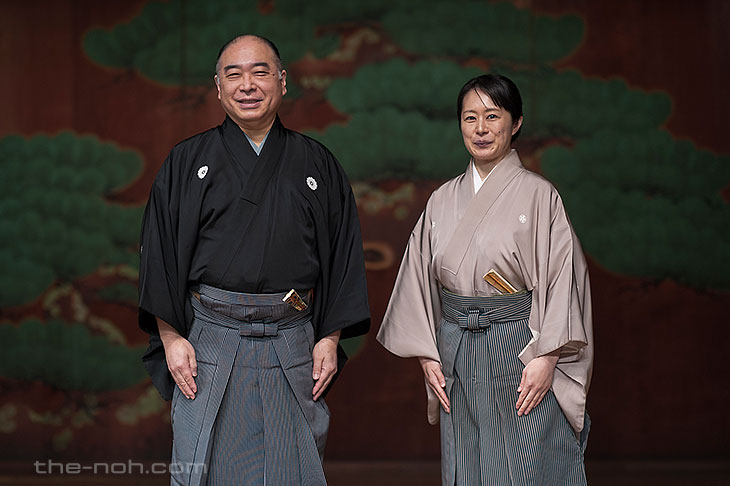
Individuality oozes out of the rigorous gestural vocabulary of Noh
Kanze: The eyes in a Noh mask are extremely small. (When you wear one) there’s a strong sense of being inside a closed chamber. It’s a miniature version of social withdrawal, so to speak.
Oshima: That’s so true (laughs).
Kanze: That’s why, when you train wearing a mask there’s a sense that you’re returning to your true self. It’s akin to shutting yourself in a room alone. Noh audiences are effectively getting a hidden camera view of a locked room. So Noh shows you the role, and the personal qualities and character of the actor.
Audience members will draw on their own memories in envisioning Ariwara no Narihira (a Japanese courtier and waka poet of the early Heian period) and the daughter of Ki no Aritsune (the protagonists of the Noh play, Izutsu). They could, for example, compare their experience of waiting for three hours at a station to that of the waiting woman (the daughter of Aritsune) in Izutsu (The Well Head; see the Noh plays database). Noh serves as a bridge between these two ways of thinking.
When I play that role, it’s not me and it’s not simply the part either. An interesting way to see Noh would be as the rising up of a fictitious shite.
Oshima: That’s a novel idea. Especially given that the belief in the necessity of penetrating this fiction leads many to view the thresholds to Noh as being too high.
Kanze: Once you become familiar with Noh you can begin striking out on your own. The actors build the terminal on which the fiction stands, the audience is free to see the unfolding drama in any way he or she chooses; there are no rules. You may be watching the same play, but every single member of the audience will experience that performance, see it differently.
Oshima: That’s an interesting point. In a sense, you get to enjoy the pleasures of a world of fantasy. It’s a simplified art form, so you’re free to daydream to your heart’s content.
Kanze: It’s for that reason that I think people who’ve withdrawn from society – social recluses – would enjoy seeing a Noh or Kyogen performance. I also recommend Noh training, too, though I’d advise caution in choosing your teacher as a teacher prone to anger could end up making these people more reclusive still.
Knock up against a hurdle and before you know it a new you is born. That won’t happen if the hurdle is too low, though. So as a teacher you can’t afford to be either too strict or too lenient. When I’m teaching junior actors I have to decide whether it’s better to make them work a little harder or to back off. You’re dealing with individual voices and bodies so you have to take proper care in taking the measure of those individuals.
Inner strength is important, too. For teacher and student alike, so keeping up my own physical strength and perseverance is essential. As far as I can tell, very little in life goes according to plan, but keeping at something, persevering, opens the door to different opportunities. That persistence, that is what I believe makes all the difference. (End of Part 2)
Kanze school shite-kata Noh actor, Tetsunojō Kanze IX (観世銕之丞)
Tetsunojō Kanze IX is the firstborn son of master Tetsunojō Kanze VIII (a Living National Treasure) and was born in Tokyo in 1956. His real name is Akeo. He learned his art from his father and his uncle, Kanze Hisao. Kanze made his stage debut at the age of four. His first performance as a shite-kata was in Iwafune (Sacred Stone Boat) at the age of eight. In 2002, he was given the ancestral name Tetsunojō Kanze IX. In 2008, Kanze was awarded the 65th Nihon Geijutsuin Shō (Japan Art Academy Award), and in 2011 also received the Shiju Hoshō (medal of honor with purple ribbon, which is awarded to individuals who have contributed to academic and artistic developments, improvements and accomplishments). As the head of the actors’ line of Tetsunojō and head of Tessenkai Theatre Company, he is expected to serve as a torchbearer for the Noh world in the years to come. He has an established reputation for the combination of strength and subtlety that he brings to his utai (vocals) and performances (interpretations). In addition to his activities in Tokyo, Kyoto and Osaka, Kanze is a frequent participant in overseas performances of Noh. He has been inscribed on the list of Intangible Cultural Heritage of Japan. He is representative director of Tessenkai Theatre Company (a Public Interest Incorporated Association), and president of the Nohgaku Performers’ Association (another Public Interest Incorporated Association). He is on the board of trustees of Kyoto University of Art and Design and teaches on a part-time basis at Tokyo Metropolitan High School. He is the supervising editor of the manga series “Hana Yori mo Hana no Gotoku” and the author of a work entitled “Noh no chikara – Sei to Shi wo Mitsumeru Inori no Geinō” (The Power of Noh – The performing art devoted a hard look at life and death).
Interviewer: Noh actor of the Kita school, Kinue Oshima (大島衣恵)
Uchida entered the Noh club of the Hosho School at Kyoto University and became captivated by the art there. Since Kinue Oshima is a shite actor of the Kita school. She is a member of the Nohgaku Performers’ Association. Oshima was born in Tokyo in 1974. She moved to the city of Fukuyama in Hiroshima Prefecture at the age of two, in which year she made her stage debut as a chigo (child role) in Kurama-tengu (Long-nosed Goblin in Kurama). She studied both with her grandfather Hisami Oshima (the third-generation master of the family’s Noh performers) and her father Masanobu (the fourth-generation master). In 1998, she became the first female Noh actor of the Kita school to perform on stage. She has subsequently joined a number of overseas performing tours and in 2005 was awarded the Hiroshima Prefecture Culture Award. In 2007, Oshima received the Hiroshima Prefecture Encouragement Award for Education and in 2010 was awarded the Encouragement Award for International Exchange by the Hiroshima International Cultural Foundation.


